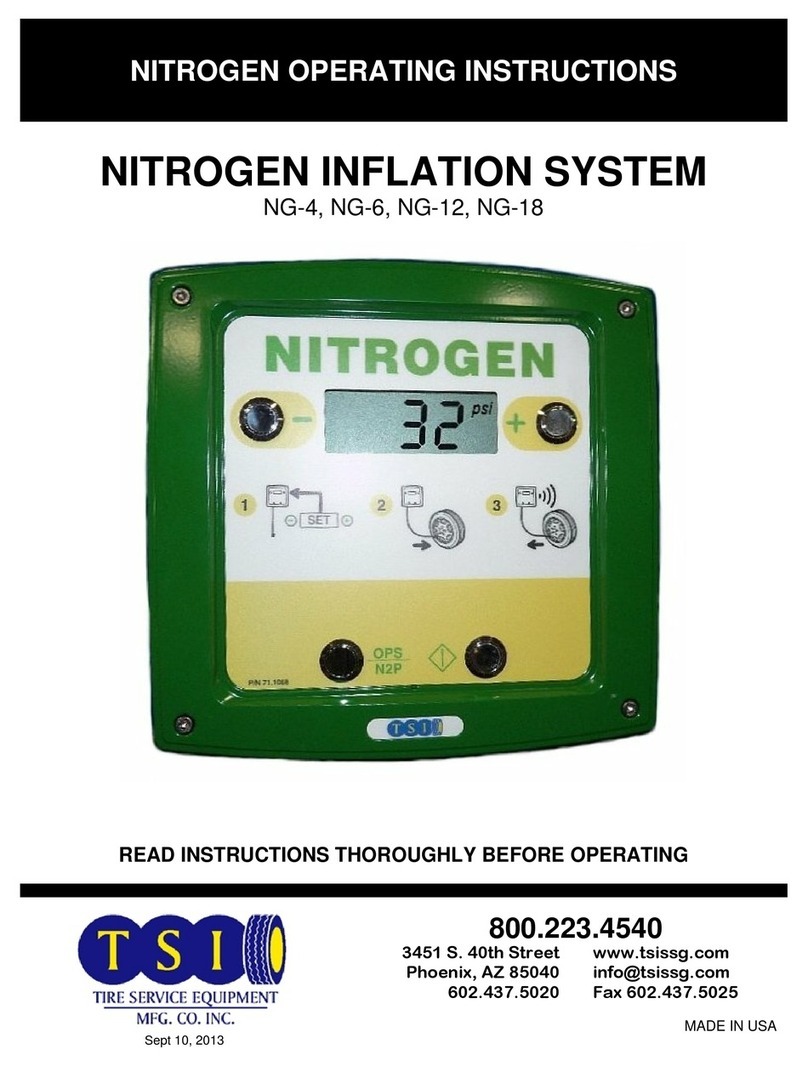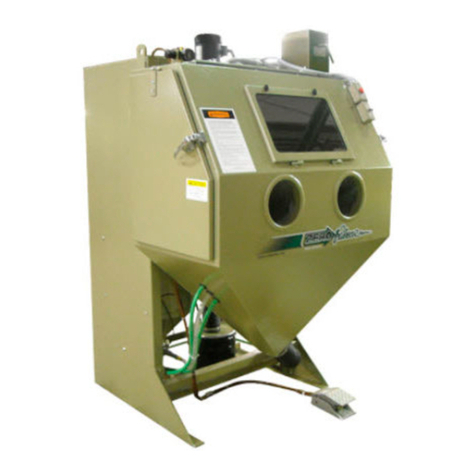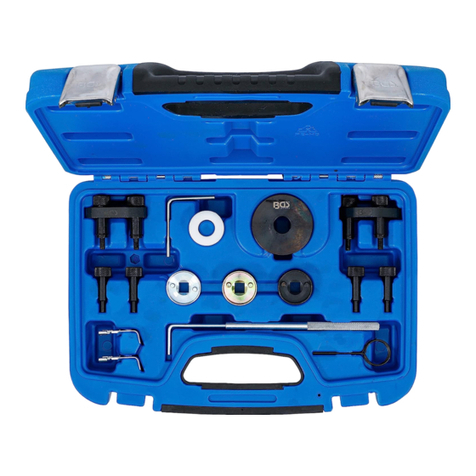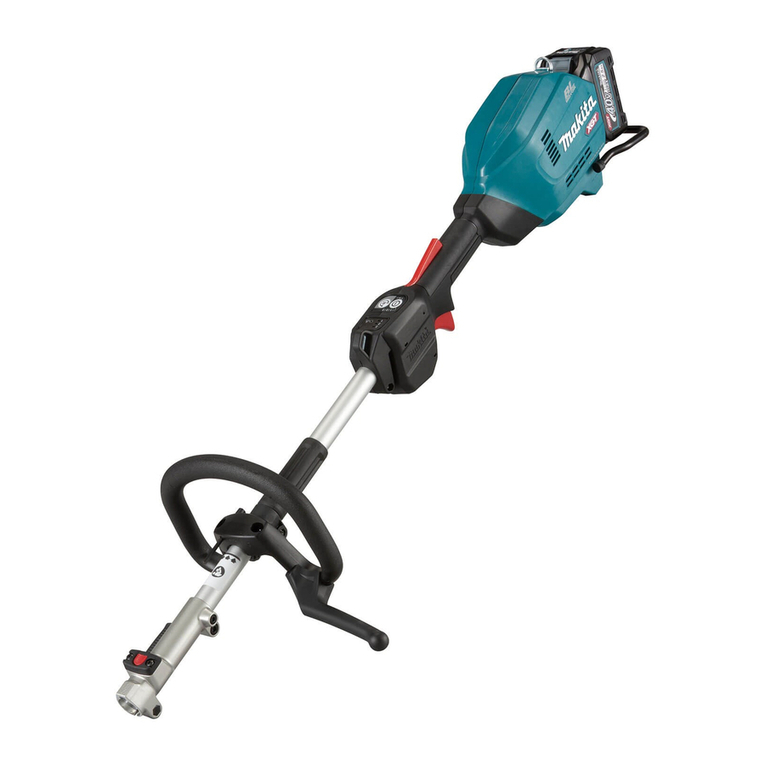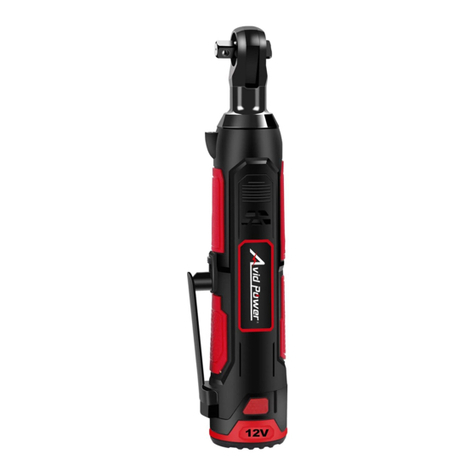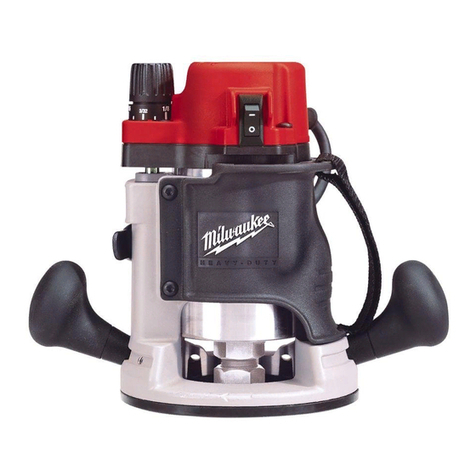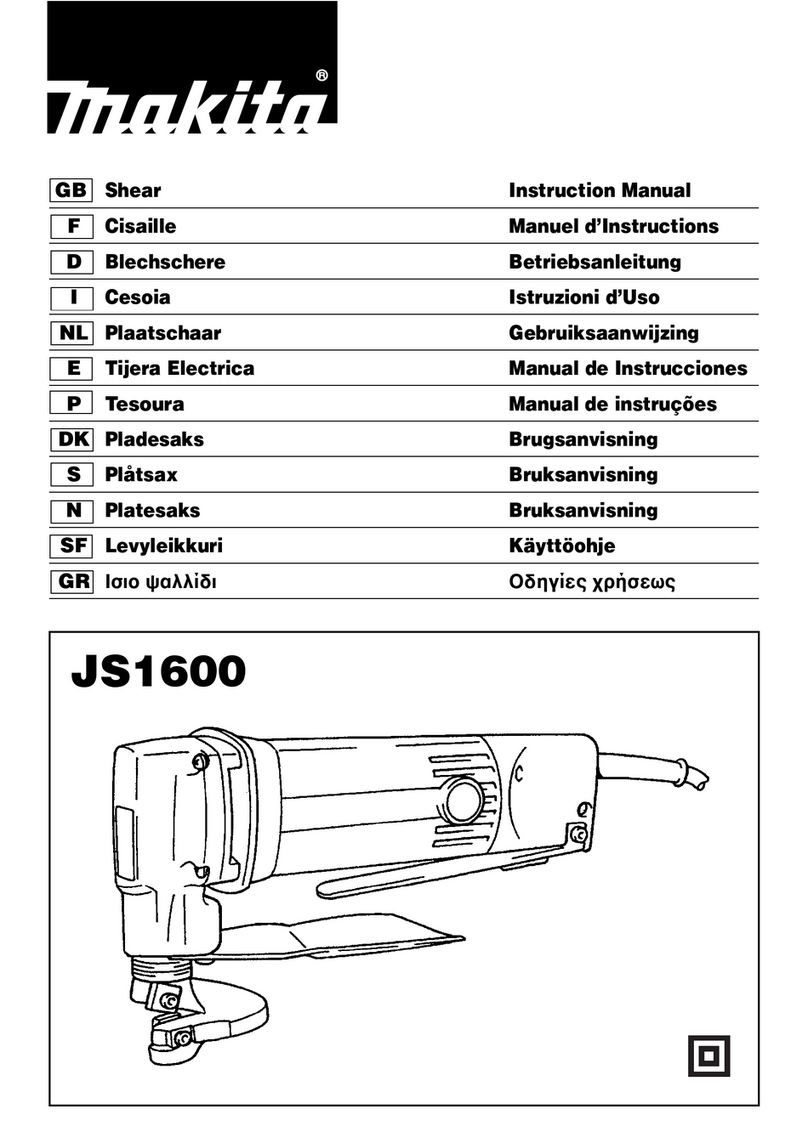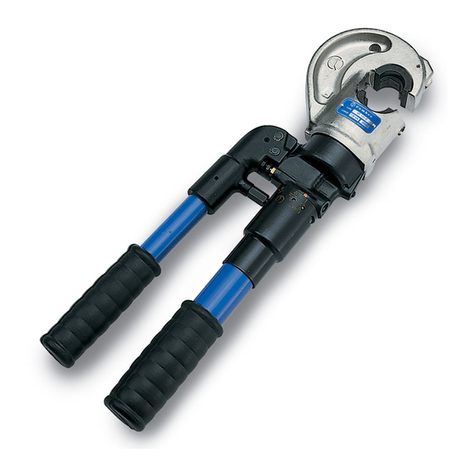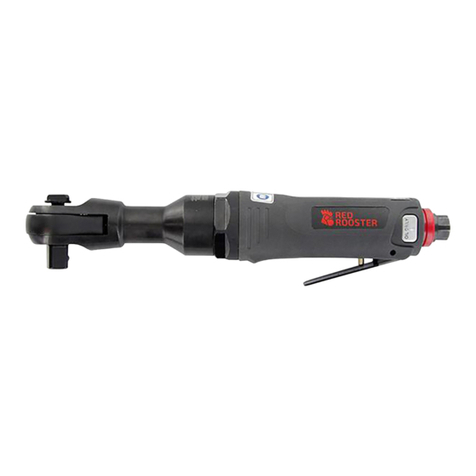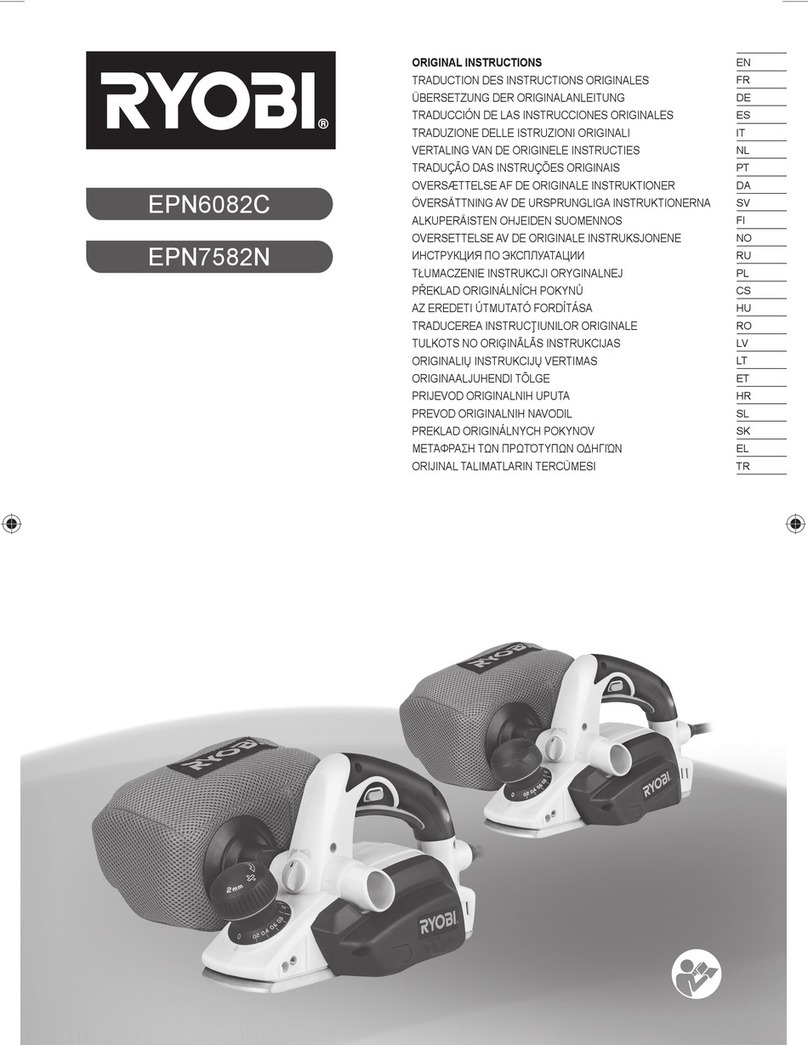TSI Instruments AIRFLOW Instruments ProHood PH720 User manual

OWNER’S MANUAL
Alnor®Electronic Balancing Tool
Models EBT720/EBT721
and
AIRFLOW™Instruments ProHood™
Capture Hood Models PH720/PH721
EBT720/PH720 Shown with all
accessory options
EBT721/PH721 Shown with
all accessory options

LIMITATION OF WARRANTY AND LIABILITY
Copyright©
TSI Incorporated / 2005–2011 / All rights reserved.
LIMITATION OF WARRANTY AND LIABILITY (effective July 2000)
Seller warrants the goods sold hereunder, under normal use and service as described in the operator's
manual, shall be free from defects in workmanship and material for twenty-four (24) months, or the length
of time specified in the operator's manual, from the date of shipment to the customer. This warranty
period is inclusive of any statutory warranty. This limited warranty is subject to the following exclusions:
a. Hot-wire or hot-film sensors used with research anemometers, and certain other components when
indicated in specifications, are warranted for 90 days from the date of shipment.
b. Parts repaired or replaced as a result of repair services are warranted to be free from defects in
workmanship and material, under normal use, for 90 days from the date of shipment.
c. Seller does not provide any warranty on finished goods manufactured by others or on any fuses,
batteries or other consumable materials. Only the original manufacturer's warranty applies.
d. Unless specifically authorized in a separate writing by Seller, Seller makes no warranty with respect
to, and shall have no liability in connection with, goods which are incorporated into other products or
equipment, or which are modified by any person other than Seller.
The foregoing is IN LIEU OF all other warranties and is subject to the LIMITATIONS stated herein. NO
OTHER EXPRESS OR IMPLIED WARRANTY OF FITNESS FOR PARTICULAR PURPOSE OR
MERCHANTABILITY IS MADE.
TO THE EXTENT PERMITTED BY LAW, THE EXCLUSIVE REMEDY OF THE USER OR BUYER, AND
THE LIMIT OF SELLER'S LIABILITY FOR ANY AND ALL LOSSES, INJURIES, OR DAMAGES
CONCERNING THE GOODS (INCLUDING CLAIMS BASED ON CONTRACT, NEGLIGENCE, TORT,
STRICT LIABILITY OR OTHERWISE) SHALL BE THE RETURN OF GOODS TO SELLER AND THE
REFUND OF THE PURCHASE PRICE, OR, AT THE OPTION OF SELLER, THE REPAIR OR
REPLACEMENT OF THE GOODS. IN NO EVENT SHALL SELLER BE LIABLE FOR ANY SPECIAL,
CONSEQUENTIAL OR INCIDENTAL DAMAGES. SELLER SHALL NOT BE RESPONSIBLE FOR
INSTALLATION, DISMANTLING OR REINSTALLATION COSTS OR CHARGES. No Action, regardless
of form, may be brought against Seller more than 12 months after a cause of action has accrued. The
goods returned under warranty to Seller's factory shall be at Buyer's risk of loss, and will be returned, if at
all, at Seller's risk of loss.
Buyer and all users are deemed to have accepted this LIMITATION OF WARRANTY AND LIABILITY,
which contains the complete and exclusive limited warranty of Seller. This LIMITATION OF WARRANTY
AND LIABILITY may not be amended, modified or its terms waived, except by writing signed by an Officer
of Seller.
Service Policy
Knowing that inoperative or defective instruments are as detrimental to TSI as they are to our customers,
our service policy is designed to give prompt attention to any problems. If any malfunction is discovered,
please contact your nearest sales office or representative, or call Customer Service department at
+44 (0) 149 4 459200 (UK), (800) 874-2811 (USA), or (1) 651-490-2811 (International).
Trademarks
TSI®, TSI logo, Alnor®, AIRFLOW™ Instruments, LogDat1, and ProHood™ are trademarks of TSI
Incorporated.
.

i
CONTENTS
About This Manual.....................................................................................................................iii
Formatting and Typography....................................................................................................iii
Technical Assistance—Help! ..................................................................................................iii
Chapter 1. Introduction ..............................................................................................................1
Instrument Description............................................................................................................1
Micromanometer ...............................................................................................................2
Micromanometer.....................................................................................................................3
Standard Tools........................................................................................................................3
Pitot Tube..........................................................................................................................3
Static Pressure Probe.......................................................................................................3
Optional Tools.........................................................................................................................3
Capture Hoods..................................................................................................................3
Velocity Matrix...................................................................................................................3
Air Flow Probe...................................................................................................................3
Temperature Probe...........................................................................................................3
Temperature/Humidity Probe............................................................................................3
Chapter 2. Unpacking and Setting Up.......................................................................................5
Unpacking...............................................................................................................................5
Preparing the Instrument for Use............................................................................................6
Power the Micromanometer with the AC Adapter.............................................................6
Power the Micromanometer with Batteries........................................................................6
Connecting the Pitot Tube to the Micromanometer.................................................................8
Connecting the Static Pressure Port to the Micromanometer.................................................8
Attaching the Micromanometer to the Capture Hood Base.....................................................9
Connecting the Velocity Matrix to the Micromanometer....................................................9
Connecting the Air Flow Probe to the Micromanometer .......................................................10
Connecting the Temperature Probe or Temperature and Humidity Probe to the
Micromanometer .............................................................................................................10
Chapter 3. Getting Started .......................................................................................................13
Keypad Operation.................................................................................................................13
Common Terms ....................................................................................................................14
Sample............................................................................................................................14
Logging Interval...............................................................................................................14
Test ID.............................................................................................................................14
Step-By-Step Example Operation.........................................................................................15
Chapter 4. How To ....................................................................................................................17
Select a Tool.........................................................................................................................17
Set the Time and Date..........................................................................................................19
Change the Currently Selected Test ID ................................................................................19
Recall Sample Data ..............................................................................................................19
Delete Sample Data..............................................................................................................20
Delete all Sample Data ...................................................................................................20
Delete the Samples Stored in a Single Test ID...............................................................20
Delete a Single Sample...................................................................................................20
Select/Set a K-factor for a Tool.............................................................................................21

ii
View/Set Standard Pressure and Temperature ....................................................................21
Set Units of Measure for Temperature, Pressure, Velocity/Flow and Humidity....................23
Select the RS232 Output Device (Computer or Printer) .......................................................23
Set the Baud Rate.................................................................................................................24
Set the Format for Date and Decimal....................................................................................24
Set Display Mode for Running Average or Single.................................................................25
Select Discrete or Continuous Logging.................................................................................25
Turn Back Pressure Compensation On and Off....................................................................26
Take Back Pressure Compensated Hood Readings.............................................................26
Set Deadband On and Off.....................................................................................................27
Calibrate the Micromanometer (User Calibration).................................................................27
Select User Calibration or Factory Calibration......................................................................28
Connect and Download Data to an Optional Printer.............................................................28
Connect and Download Data to a Computer ..................................................................29
Data Acquisition (Polling)......................................................................................................30
Chapter 5. Changing Flow Hoods ...........................................................................................31
Flow Hood Parts Identification ..............................................................................................31
Hood Assembly.....................................................................................................................31
Alternate Hood Installation..............................................................................................32
Direct Inflow Measurement Hood for Biological Safety Cabinets....................................37
Chapter 6. Flow Measurements Using the Capture Hood.....................................................43
Non-Backpressure Compensated Measurements................................................................43
Single Measurements ...........................................................................................................43
Running Average Measurements..........................................................................................44
Backpressure Compensated Measurements........................................................................44
Error Display .........................................................................................................................45
Chapter 7. Maintenance and Troubleshooting.......................................................................47
Fabric Hood...........................................................................................................................47
Micromanometer...................................................................................................................47
Manifold.................................................................................................................................47
Cases..............................................................................................................................47
Calibration.............................................................................................................................48
Error Code.......................................................................................................................48
Appendix A. Back Pressure.....................................................................................................53
Verifying Flow Measurements...............................................................................................53
Appendix B. Actual vs. Standard Air Velocity and Flow Measurements.............................55

iii
About This Manual
This manual explains how to set up, operate and maintain the Alnor EBT720/EBT721 and AIRFLOW™
Instruments PH720/PH721. Read it thoroughly before using the instrument.
Caution
CAUTION
WHILE USING THE BALOMETER
®
AIR BALANCING INSTRUMENT TO TEST AIR
FLOW IN DUCTS,YOU MAY COME INTO CONTACT WITH OR BE EXPOSED TO
DUST,POLLEN,MOLD,FUNGUS,OR OTHER AIRBORNE CONTAMINANTS.IF YOU
ARE OR MAY BE SENSITIVE TO DUST,POLLEN,MOLD,FUNGUS,OR OTHER
AIRBORNE CONTAMINANTS,ALWAYS USE AN APPROPRIATE MASK OR
RESPIRATOR WHILE EMPLOYING THE BALOMETER®AIR BALANCING
INSTRUMENT.
Formatting and Typography
Step-by-step instructions are numbered in boldface type: 1,2,3, etc., set flush-left against the
margin.
References to keys on the micromanometer and the instrument's displayed readout are represented by
a typeface called Arial. In addition to the different typeface, displayed messages appear in quotes.
When reference is made to other sections of the manual, the section title is italicized.
Technical Assistance—Help!
For technical assistance or questions about the instrument, or if the instrument needs repair or
recalibration, call Customer Service at +44 (0) 149 4 459200 (UK), (800) 874-2811 (USA), or (1) 651-
490-2811 (International). Product application notes are available to provide more information on the
product. These application notes, as well as other related material, can be obtained by calling Customer
Service or by visiting the web site at www.alnor.com or www.airflowinstruments.co.uk.

iv
(This page intentionally left blank)

1
Chapter 1. Introduction
The Electronic Balancing Tools EBT720/EBT721 and ProHood™PH720/PH721 capture hoods are
lightweight and easy-to-use instruments packaged with a variety of accessories for measuring pressure,
temperature, humidity, air velocity, and air volume. Features of the micromanometer include:
Single-function keys for ease of use
Auto-zero for pressure measurements, auto-density correction, and back-pressure compensation when
used with a capture hood
User-selectable English and metric units
Conversions between actual and standard flow
Discrete or continuous display and data logging capabilities
Output port for downloading to a printer or a PC
Powered by AC adapter or batteries (rechargeable NiMH or alkaline)
Full field calibration
Designed for:
Test and balance professionals
Mechanical contractors
Industrial hygienists
Plant engineers and facilities maintenance personnel
Applications include:
Test, balance, or commission HVAC systems
Test clean rooms and biological safety cabinets
Measure fume hood or filter face velocity
Measure pressure, temperature, relative humidity, air velocity, or air flow
CAUTION
WHILE USING THE BALOMETER
®
AIR BALANCING INSTRUMENT TO TEST AIR
FLOW IN DUCTS,YOU MAY COME INTO CONTACT WITH OR BE EXPOSED TO
DUST,POLLEN,MOLD,FUNGUS,OR OTHER AIRBORNE CONTAMINANTS.IF YOU
ARE OR MAY BE SENSITIVE TO DUST,POLLEN,MOLD,FUNGUS,OR OTHER
AIRBORNE CONTAMINANTS,ALWAYS USE AN APPROPRIATE MASK OR
RESPIRATOR WHILE EMPLOYING THE BALOMETER®AIR BALANCING
INSTRUMENT.
Instrument Description
The basic EBT720/PH720 includes a micromanometer, carrying case, 18 in. (46 cm) pitot tube, (2) static
pressure probes, (2) 8 ft (2.4 m) Norprene®tubing, user manual, LogDat1™for Windows®data
downloading software and RS232 interface cable, neck strap, internal NiMH battery charger, (4) AA
NiMH batteries, AC adapter, and NIST traceable certificate.
®Norprene is a registered trademark of Norton Performance Plastics, Akron, Ohio, USA.

2 Electronic Balancing Tool EBT720/EBT721 and ProHood PH720/PH721
The basic EBT721/PH721 contains all of the EBT720/PH720 components plus 2 ft ×2 ft (610 mm ×610
mm) air capture hood, frame, and base. A variety of optional tools (see below) are also available to meet
your measurement needs.
The following paragraphs provide brief descriptions of the micromanometer and the various standard and
optional tools for use with the EBT/PH. Refer to Chapters 3and 4for more detailed information on using
the micromanometer and taking measurements with various sensors and probes.
Micromanometer
Figures 1 and 2 show the features of the micromanometer used in the EBT720/EBT721 and
PH720/PH721.
Figure 1: Features of the EBT720/EBT721 and PH720/PH721 Micromanometer, Front View
Figure 2: Features of the EBT720/EBT721 and PH720/PH721 Micromanometer, Back View
Display
Keypad
AC Adapter
Connection
RS232 Port
For Future Use
Probe Connector
Headphone
Connection
Battery
Compartment
Airflow
Inlet/Outlet

Chapter 1: Introduction 3
Micromanometer
The micromanometer is a multifunction instrument useful in obtaining air velocity, air flow, absolute and
differential pressure, temperature, and humidity measurements when used with the tools listed below. The
lightweight micromanometer incorporates auto-zeroing for high-accuracy, low-end pressure
measurements.
Standard Tools
This section gives a brief description of standard tools for the micromanometer.
Pitot Tube
The pitot tube is primarily used to obtain air velocity, air volume, and velocity pressure measurements
within ductwork.
Static Pressure Probe
The static pressure probe is primarily used to obtain static pressure measurements within ductwork.
Optional Tools
This section gives a brief description of optional tools for the micromanometer.
Capture Hoods
Capture hoods are primarily used to obtain volumetric air flow measurements through diffusers, registers
and grilles. Capture hoods are available in a kit with one 2 ft ×2 ft (610 mm ×610 mm) fabric hood,
frame, and base assembly. Alternate hood sizes are available and descriptions and part numbers can be
found in Table 2 of Chapter 2 in this manual.
Velocity Matrix
The velocity matrix is primarily used to obtain area-averaged multi-point air velocity measurements
useful in laboratory hood face velocity testing, filter face velocity testing, and other applications.
Air Flow Probe
The air flow probe is primarily used to obtain single point air velocity or air volume measurements in
ductwork.
Temperature Probe
The temperature probe is used to obtain temperature measurements over the range of -40 to 250°F
(-40 to 121°C).
Temperature/Humidity Probe
The temperature/humidity probe is used to obtain temperature measurements over the range of 14 to
140°F (-10 to 60°C), humidity measurements over the range of 0 to 95% RH, along with calculated wet
bulb temperature of 40 to 140°F (4 to 60°C) and dewpoint temperature of 5 to 120°F (-15 to 49°C).

4 Electronic Balancing Tool EBT720/EBT721 and ProHood PH720/PH721
(This page intentionally left blank)

5
Chapter 2. Unpacking and Setting Up
This chapter describes unpacking and setting up (preparing) the Electronic Balancing Tool (EBT) or
ProHood™capture hood for use. Figure 3 shows a picture of the Model EBT720/PH720 with a velocity
matrix measuring the face velocity on a laboratory hood.
Figure 3: Model EBT720/PH720 with Velocity Matrix
Unpacking
As you unpack the instrument and accessories, check the components against your packing list. If any
parts are missing or damaged, notify us immediately. Tables 1 and 2 list available standard and optional
components.
Table 1: List of Standard and Optional Components
Item
Part No.
Models EBT720 and EBT721
Electronic Balancing Tools (Alnor)
EBT720
EBT721
Models PH720 and PH721 ProHood
™
capture hood (A
IRFLOW™
Instruments)
PH720
PH721
Carrying case, EBT720/PH720
1319378
Carrying case, wheeled hood kit, EBT721
1319379
AA-size NiMH battery, four required
1208048
Operation and Service Manual
1980497
Velocity Matrix Add On Kit
801090
Air Flow Probe
800187
Temperature Probe (A
IRFLOW™
Instruments)
800208
Temperature and Humidity Probe (A
IRFLOW™
Instruments)
800209
Temperature Probe (Alnor)
800188
Temperature and Humidity Probe (Alnor)
800189

6 Electronic Balancing Tool EBT720/EBT721 and ProHood PH720/PH721
Table 2: List of Optional Hood Components
Item Part No.
1 ft ×4 ft (305 mm ×1220 mm) and 2 ft ×4 ft (610 mm ×1220 mm) fabric hood
and frame kit
801206
1 ft ×5 ft (305 mm ×1525 mm) and 3 ft ×3 ft (915 mm ×915 mm) fabric hood
and frame kit
801207
1 ft ×4 ft (305 mm ×1220 mm) fabric hood and frame kit 801200
2 ft
×
4 ft (610 mm
×
1220 mm) fabric hood and frame kit
801201
1 ft
×
5 ft (305 mm
×
1525 mm) fabric hood and frame kit
801202
3 ft
×
3 ft (915 mm
×
915 mm) fabric hood and frame kit
801203
8 in.
×
21 in. (203 mm
×
533 mm) BSC fabric hood, frame, poles, and stand kit
801204
10 in.
×
21 in. (254 mm
×
533 mm) BSC fabric hood, frame, poles, and stand kit
801205
Please complete the registration card included with this product and mail it promptly. The card allows us
to inform you of product updates. If you prefer, register through the Alnor web site or AIRFLOW web site.
Preparing the Instrument for Use
Before you can use the Electronic Balancing Tool, you must decide on a power source.
Power the Micromanometer with the AC Adapter
When the AC adapter is plugged into the micromanometer, the unit automatically turns on, runs a brief
diagnostic check, and briefly lights all segments of the display. It then displays the type of batteries the
unit is set to use (alkaline or rechargeable NiMH) and turns itself OFF.
Whenever the AC adapter is plugged into the micromanometer, the rechargeable batteries are recharged.
(Assuming you are using rechargeable batteries and the switch inside the battery compartment is set to
NiMH. See below.)
Power the Micromanometer with Batteries
When not using the AC adapter, the Electronic Balancing Tool or ProHood™capture hood requires four
AA-size batteries to operate. These can be either alkaline batteries or rechargeable NiMH batteries. For
your convenience, four NiMH batteries are included with the EBT/PH.
To select the type of batteries you are using:
1. Turn the unit off and locate the battery cover on the back of the micromanometer (see Figure 4).

Chapter 2: Unpacking and Setting Up 7
Figure 4: Battery Cover Removal
2. Press down on the compartment cover and slide it down. (The cover slides off.)
3. Remove the battery holder by pulling up on the bottom (to loosen it) and then pulling the battery
holder free.
4. Refer to Figure 5 and set the battery selection switch to indicate the type of batteries you are using.
Figure 5: Location of Battery Type Selector Switch
5. Reinstall the battery holder and replace the battery compartment cover.
To install replacement batteries:
1. Turn the unit off and locate the battery cover on the back of the micromanometer (see Figure 4).
2. Press down on the compartment cover and slide it down. (The cover slides off.)
3. Remove the battery holder by pulling up on the bottom (to loosen it) and then remove the battery
holder.
Battery Selection Switch

8 Electronic Balancing Tool EBT720/EBT721 and ProHood PH720/PH721
4. Remove the old batteries and replace with fresh batteries (alkaline or rechargeable NiMH). Make
certain batteries are correctly oriented.
5. Verify the battery selection switch is correctly set (see Figure 5).
6. Reinstall the battery holder and replace the compartment cover.
Note: Make sure the battery holder is oriented so that its terminals make contact with the spring
contacts in the battery compartment.
If fresh, new alkaline batteries are used, the battery indicator will show 4 bars when first turned on.
With NiMH batteries, the indicator may show a lower value even when they are fully charged.
Notes: The percent power remaining will not be accurate for NiMH batteries because their voltage
does not decrease linearly with power use.
Due to the danger of battery leakage, remove batteries from the battery compartment before
storage. Never mix battery types.
The NiMH batteries should only be charged at room temperature. Starting with batteries that
are too cold or too warm can cause the charge cycle to stop early.
Connecting the Pitot Tube to the Micromanometer
The static pressure port (-) on the pitot tube will be connected to the negative pressure (-) port on the
micromanometer, and the total pressure port (+) on the pitot tube will be connected to the positive (+) port
on the micromanometer (see Figure 6).
Figure 6: Pitot Tube
Connecting the Static Pressure Port to the Micromanometer
The static pressure port on the static pressure probe will be connected to the (+) port on the
micromanometer. The (-) port on the micromanometer will be open to atmosphere (see Figure 7).
Total Pressure Port (+) Static Pressure Port (–)

Chapter 2: Unpacking and Setting Up 9
Figure 7: Static Pressure Probe
Attaching the Micromanometer to the Capture Hood Base
1. Tilt the meter forward and align the tabs in the base of the meter with the two matching slots in the
bottom of the recessed area at the front of the base (see Figure 8).
2. When the tabs are engaged in the slots, press firmly on the face of the meter above the display until
the tab in the top center of the meter “clicks” into the bent metal retaining clip in the base.
3. Attach the temperature cable and the back pressure flap switch cable to the right side of the meter.
4. To remove the meter from the base, first disconnect the temperature cable and the back pressure flap
switch cable, then press upward on the metal retaining clip to release the meter from the base.
Figure 8: Attaching the Meter to the Capture Hood Base
Connecting the Velocity Matrix to the Micromanometer
The positive port (+) is located on the side of the Velocity Matrix that is opposite the handle assembly.
The positive port (+) on the Velocity Matrix will be connected to the (+) port on the micromanometer,
and the negative port (-) on the Velocity Matrix is connected to the (-) port on the micromanometer.
Standoffs can be screwed together to make different lengths and are used to maintain a fixed and level
orientation away from a filter. The standoffs are attached to the positive (+) side of the velocity matrix.
Static Pressure Port
Magnet

10 Electronic Balancing Tool EBT720/EBT721 and ProHood PH720/PH721
The handle assembly is attached to the downstream or negative (-) side in the center of the velocity matrix
(see Figure 9).
Figure 9: Velocity Matrix
Connecting the Air Flow Probe to the Micromanometer
The static pressure port (-) on the Air Flow Probe will be connected to the negative pressure (-) port on
the micromanometer, and the total pressure port (+) on the Air Flow Probe will be connected to the
positive (+) port on the micromanometer (see Figure 10).
Note: Observe the arrow indicator on the Air Flow Probe when taking air velocity or air volume
measurements.
Figure 10: Air Flow Probe
Connecting the Temperature Probe or Temperature and Humidity
Probe to the Micromanometer
The Temperature probe and Temperature/Humidity probe attach to the 8-pin connector located on the
right hand side of the micromanometer. When connecting the probe to the meter, the dimple on the
connector must be aligned to fit the receptacle indentation on the meter (see Figure 11).
Positive
Port (+)
Negative
Port (–)
Standoffs
Handle
Total Pressure Port (+)
Static Pressure Port (–)

Chapter 2: Unpacking and Setting Up 11
Figure 11: Connector for the Temperature Probe or Temperature/Humidity Probe
Match key on plug to
detent on receptacle

12 Electronic Balancing Tool EBT720/EBT721 and ProHood PH720/PH721
(This page intentionally left blank)

13
Chapter 3. Getting Started
This section provides information to help you quickly become familiar with the Models EBT720/EBT721
and PH720/PH721 Micromanometer functions. It also includes step-by-step instructions for taking
Sample readings.
Keypad Operation
The keypad lets you enter information, initiate functions, and change values stored in the
micromanometer. It will be helpful before operating the micromanometer to understand more fully what
each of the keys do.
and
The arrow keys let you navigate through menus or select options. Generally only one set of arrow keys
(,or ,are operational for any given operation. Use and to move through menus; use and
to increase or decrease a value.
ESC
The ESCAPE key is used to cancel or end an operation or back up to the last screen of displayed
information. The ESC key is useful if you press and realize you meant to use one of the other keys.
The ENTER key is used to accept the present value or move to the next level of a menu.
READ
If the display mode is set to SINGLE, pressing the READ key begins a reading, which stops
automatically when the reading is done.
If the display mode is set to RUNAVG, the micromanometer will measure continuously, and pressing
READ will alternately pause or resume the measurement. (See Chapter 4on how to set the display mode
to SINGLE or RUNAVG.)
There is a red button on the capture hood base that has the same function as the READ key.
Note: Pressing the READ key will not store any measurement to memory.
SAVE
The SAVE key is used to save the currently displayed measurement to the data logging memory.
NEXT TEST
The NEXT TEST key is used to select a new unused Test Id for saving Samples when logging data.
The PRINT key downloads data to an optional printer or to a computer. Refer to Chapter 4 for
information on downloading data.
STATS
The STATISTICS key lets you display COUNT, MINimum, MAXimum and AVeraGe for the Test ID
currently selected for logging data.

14 Electronic Balancing Tool EBT720/EBT721 and ProHood PH720/PH721
I/O
The ON/OFF key is used to turn the micromanometer on or off.
The BACKLIGHT key turns the display’s backlighting on and off. Use backlighting only when working
in areas where you cannot read the display with existing light. Backlighting has a significant impact on
battery life.
Common Terms
In this manual there are several terms that are used in different places. The following is a brief
explanation of the meanings of terms.
Sample
A Sample consists of all of the measurement parameters stored each time the SAVE key is pressed, or
after each logging interval has passed. The maximum number of Samples is 1000.
Logging Interval
The Logging Interval is the frequency period that the micromanometer will log readings, when logging is
set to CONTIN (continuous). For example, if logging is set to CONTIN and the logging interval is set to
60 seconds, a Sample can be taken and saved automatically every 60 seconds. Refer to chapter 4 for more
information on continuous data logging.
Test ID
A Test ID consists of a group of Samples. A Test ID can contain up to 1000 Samples. The maximum
number of Test IDs is 255.
Any new Sample will be saved to the current Test ID. You can change the current Test ID at any time to
keep your data organized, refer to instructions in Chapter 4.
The unit does not allow you to store Samples of different character in the same Test ID. If the READ key
is pressed after changes have been made to the Tool or display units or some other parameter, TEST ID
flashes on the display and a new unused TEST ID is selected.
In addition to the data for each Sample, the statistics that are available to view by TEST ID are:
SUM - The sum of all stored values in that TEST ID. (SUM is only available for hood flow or Diffuser
Flow [flow from pressure and K-Factor])
MINIMUM - The lowest value stored in that TEST ID
MAXIMUM - The highest value stored in that TEST ID
AVERAGE - The SUM divided by the number of Samples
COUNT - The number of Samples in that TEST ID
Once you have collected data in a Test ID, you can send it to a printer or a computer. See instructions for
downloading data in Chapter 4.
This manual suits for next models
3
Table of contents
Other TSI Instruments Power Tools manuals
Popular Power Tools manuals by other brands
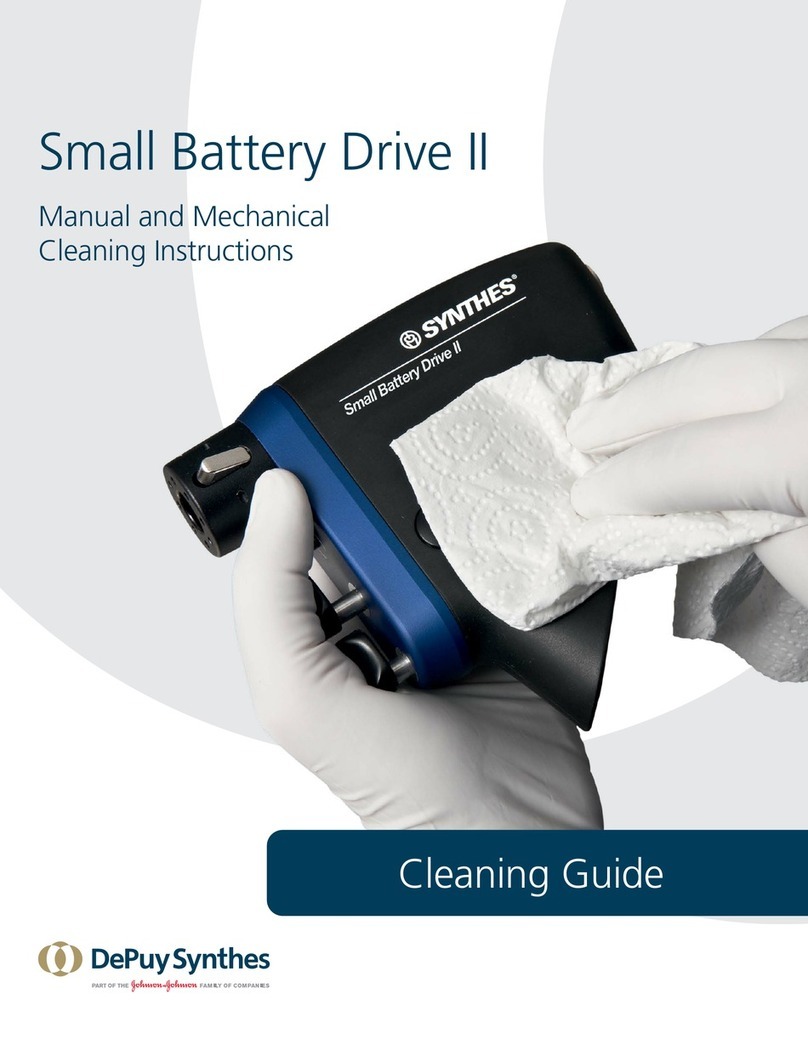
Johnson & Johnson
Johnson & Johnson DePuy Synthes Small Battery Drive II Manual and Mechanical Cleaning Instructions

Mannesmann Demag
Mannesmann Demag RRI-50T operating manual
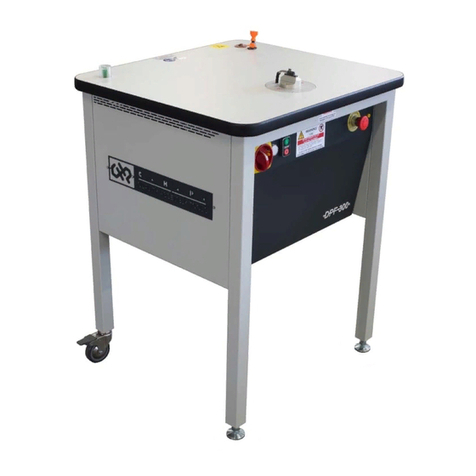
CHP
CHP DPF-300 instruction manual
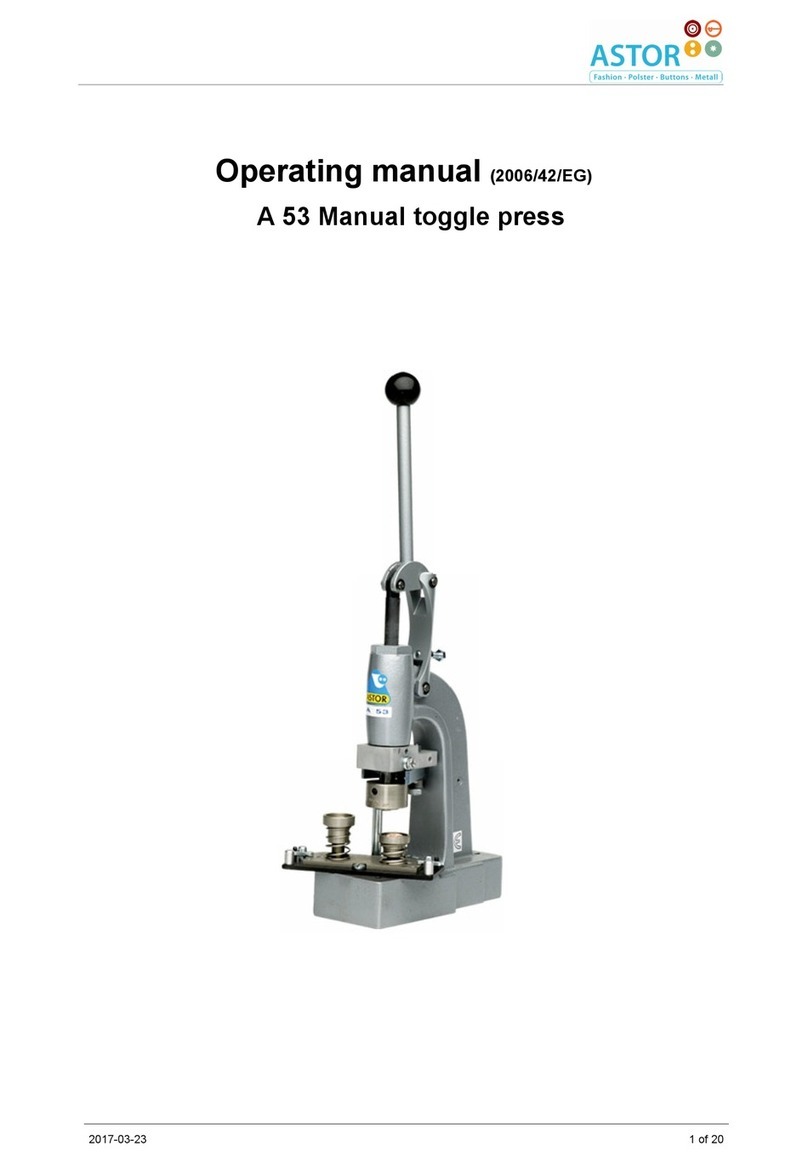
Astor
Astor A 53 operating manual
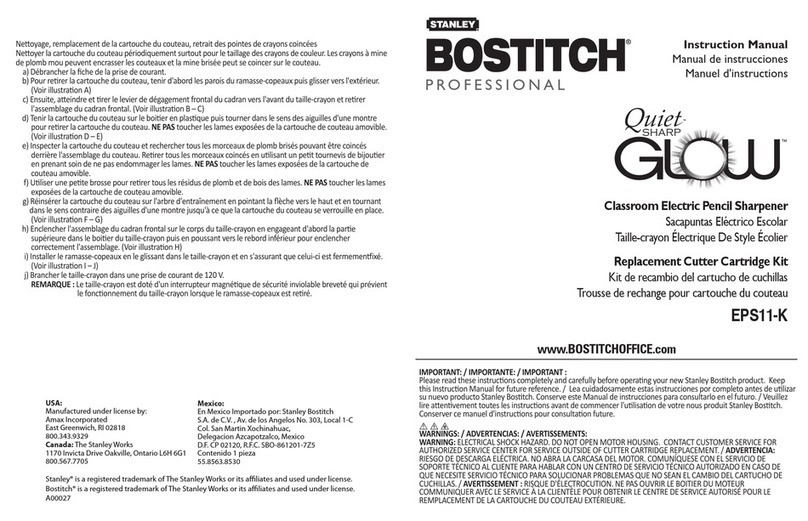
Bostitch
Bostitch EPS11-K instruction manual
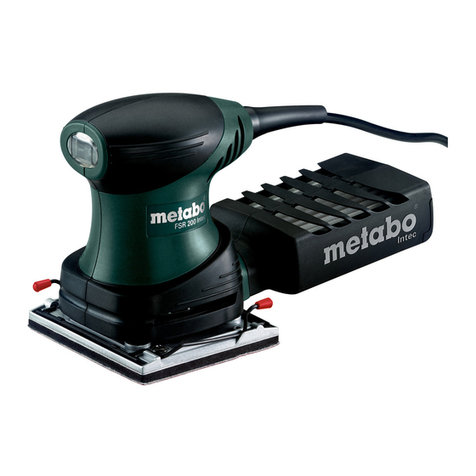
Metabo
Metabo FSR 200 INTEC - operating instructions
